The barnabotti were poor noblemen, who often couldn’t pay their rent or feed their children. They were nobles anyway.
The painting depicts such a barnabotto begging on the streets.
Source: Gli abiti de veneziani di quasi ogni età con diligenza raccolti e dipinti nel secolo XVIII, by Giovanni Grevembroch (1731–1807), which in four volumes contains over six hundred watercolours of how Venetians dressed in the 1700s.
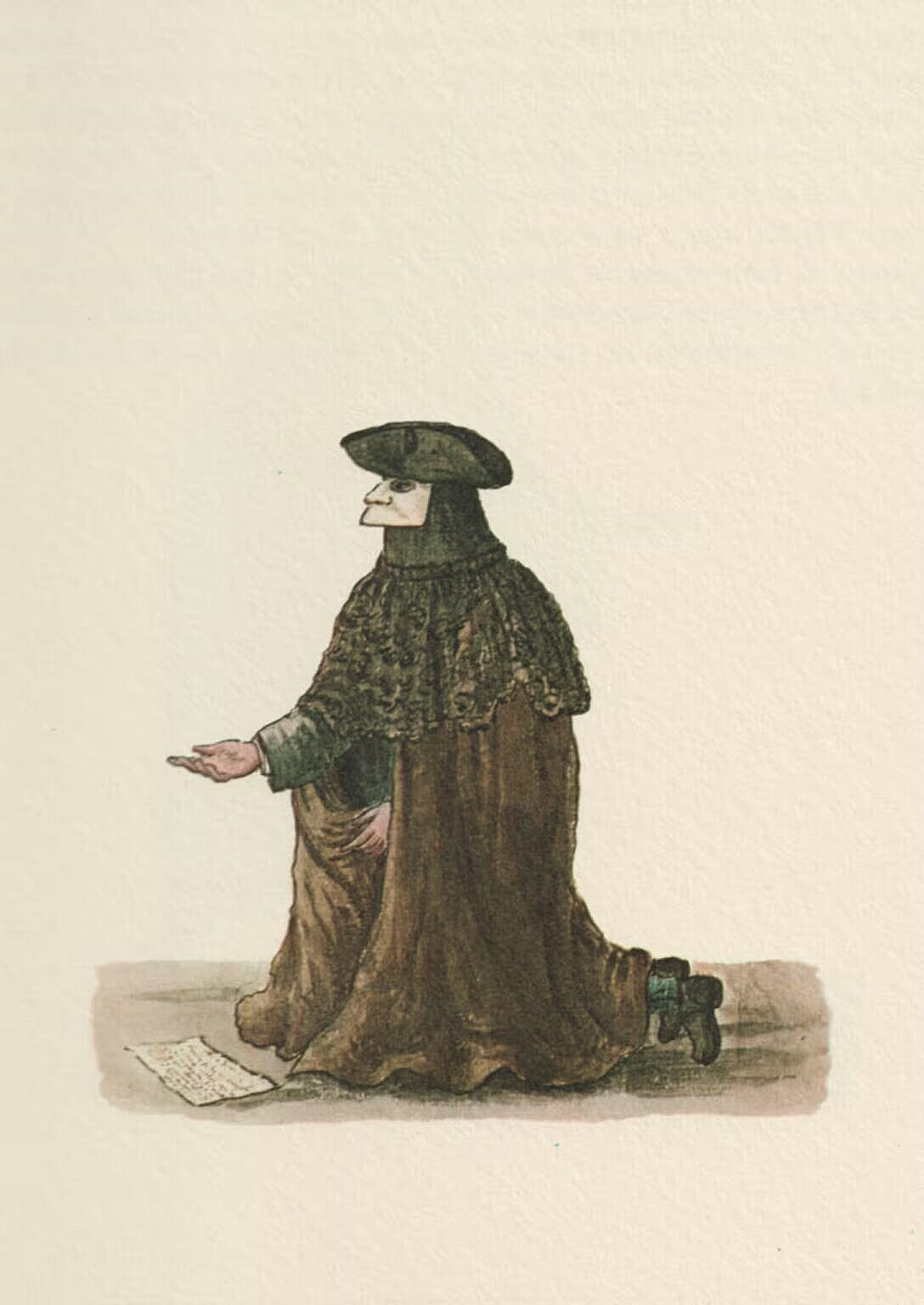
Beggar in mask
It has been mentioned in the preceding Volume, that in 1438 covered Faces were prohibited to those who begged day and night in the City; but even in this, there have always been abuses, and especially in our Century, which accommodates the Masks far more. They also make use of this, certainly, because they are ashamed for their own civility to ask for alms, to support the poor, and numerous Family.
Some are not completely opposed by Public Ministers,1 given the doubt, that the unknown Person in the case of violence, could unfortunately be discovered of Rank.2 Facilitated in this way, suffrage to compassionate needy, not even those most suited to work, or punishment, neglect to take advantage of it in the Carnival Season, whenever stationed in remote sites; but not far from busy Streets, kneeling or standing, they induce the pity of the Faithful to supply them with money. The Spies, the Policemen, the Murderers, and the Ruffians have easy fulfilment of their mysterious stratagems, through such transformed Dress.
As Mr Giambattista Gropelli always disapproved of this occult proceeding, so the Gentleman desired, that here his antipathy be marked.
Translator’s notes
- ‘Public Ministers‘ means anybody who legally represented the republic, such as zaffi (a kind of police officer) and night watchmen. ↩︎
- Here ‘rank’ means noble, which, as the ‘public ministers’ would be citizens, would cause a problem for law enforcement. ↩︎
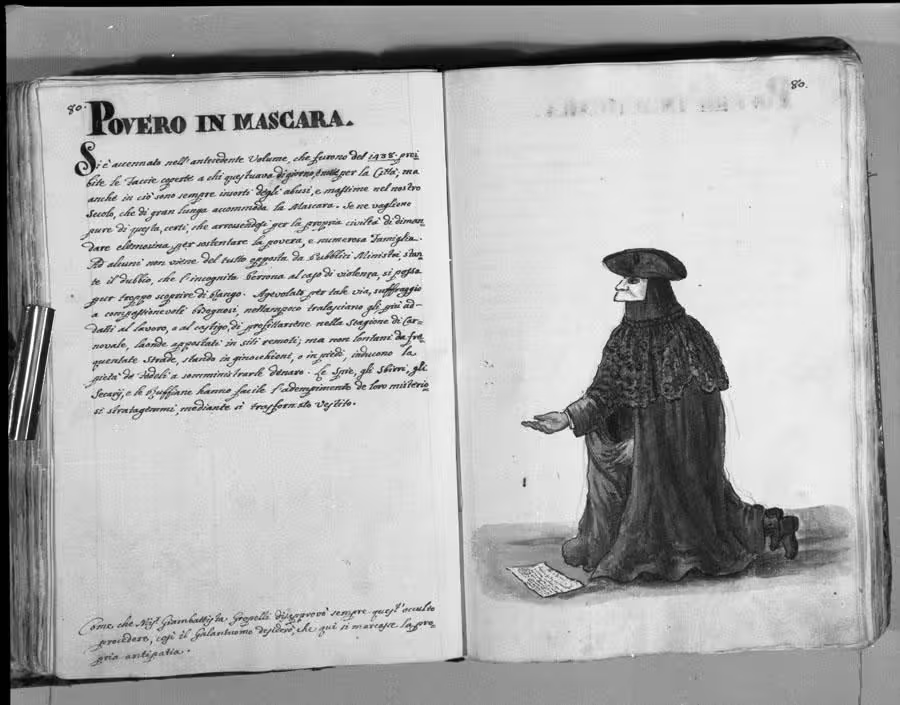
Original Italian text
Povero in Mascara
Si è accennato nell’antecedente Volume, che furono del 1438 proibite le Faccie coperte a chi questuava di giorno, e notte per la Città; ma anche in ciò sono sempre insorti degli abusi, e massime nel nostro Secolo, che di gran lunga accommoda la Mascara. Se ne vagliono pure di questa, certi, che arrossendosi per la propria civiltà di dimandare elemosina, per sostentare la povera, e numerosa Famiglia.
Ad alcuni non viene del tutto opposta da Pubblici Ministri, stante il dubbio, che l’incognita Persona al caso di violenza, si possa pur troppo scoprire di Rango. Agevolato per tale via, suffraggio a compassionevoli bisognosi, nettampoco tralasciano gli più addatti al lavoro, o al castigo, di profittarsene nella Stagione di Carnovale, laonde appostati in siti remoti; ma non lontani da frequentate Strade, stando in ginocchioni, o in piedi, inducono la pietà de Fedeli a somministrarle denaro. Le Spie, gli Sbirri, gli Secarij, e le Ruffiane hanno facile l’adempimento de loro misteriosi stratagemmi, mediante si trasformato Vestito.
Come che Mis.r Giambattista Gropelli disapprovò sempre quest’occulto procede- re, così il Galantuomo desiderò, che qui si marcasse la propria antipatia.
Grevembroch (1981), vol. 3, p. 80.
Related articles
- Gli abiti de veneziani — by Giovanni Grevembroch
- The Venetian Nobility and in particular the barnabotti.
Bibliography
- Grevembroch, Giovanni. Gli abiti de veneziani di quasi ogni eta con diligenza raccolti e dipinti nel secolo XVIII, orig. c. 1754. Venezia, Filippi Editore, 1981. [more]
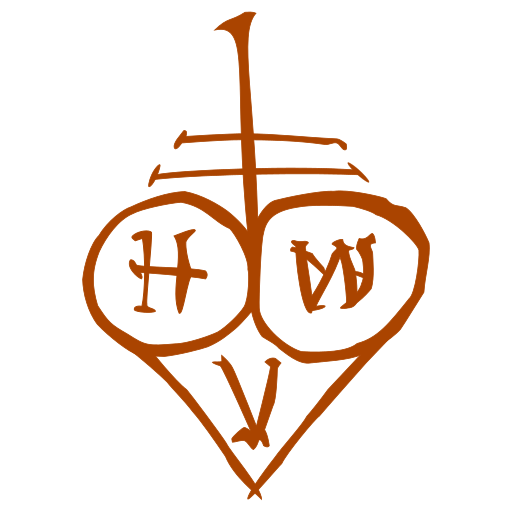


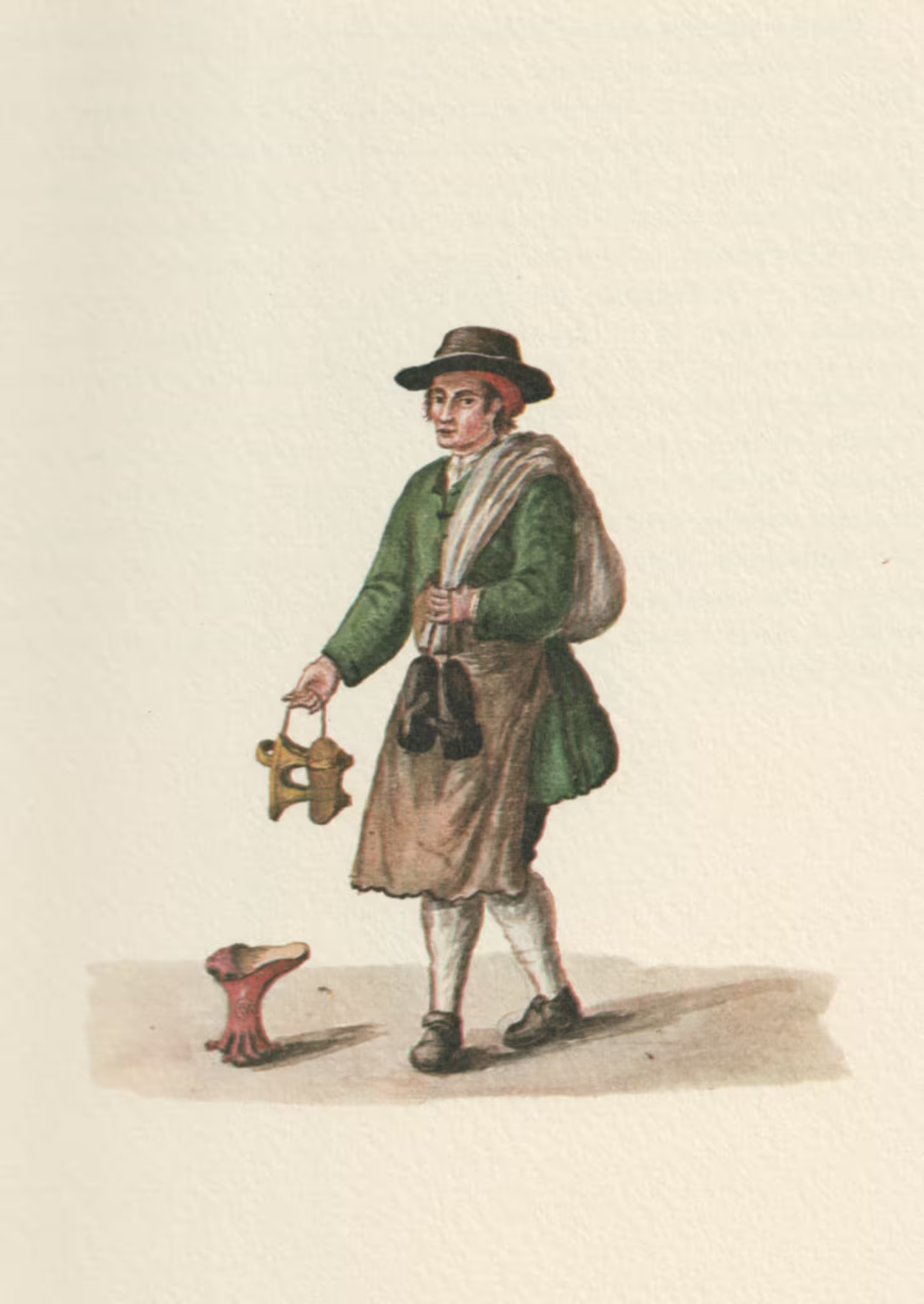
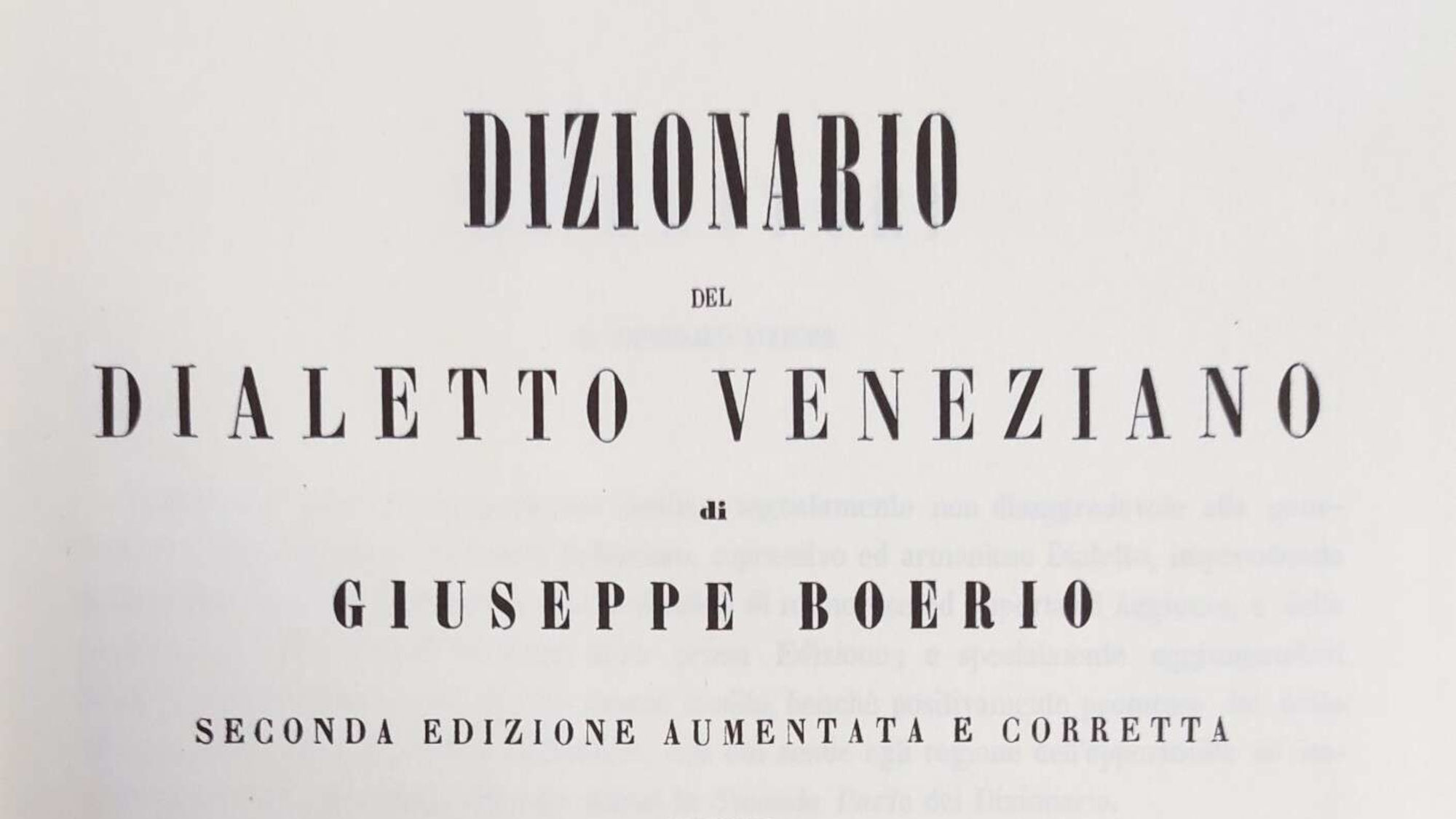
Leave a Reply